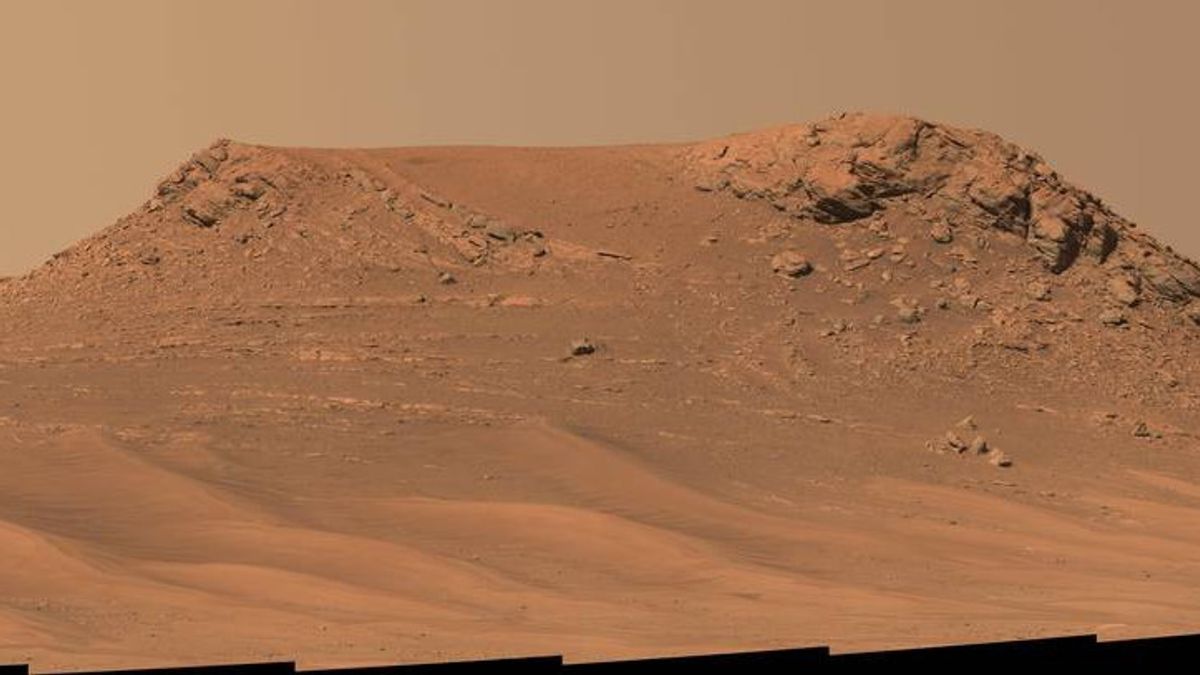JAKARTA - Perseverance has again shocked the world with its new discoveries. Through an image released by NASA, the rover shows signs of a river that was once swift on Mars.
According to NASA, quoted Monday, May 15, the river is most likely deeper and moves faster than any evidence scientists have seen in the past.
The river is part of a network of waterways flowing into Jezero Crater, an area that has been explored since landing more than two years ago.
Perseverance was found while exploring the top of a fan-shaped sediment rock pile that stands as high as 250 meters, the river displays curved layers showing water flow.
One question scientists want to answer is whether the water flows in relatively shallow flows, closer to what Curiosity explorers in Gale Crater have found, or stronger river systems.
Combined together from hundreds of images taken by the Mastcam-Z instrument embedded in Perseverance, the two new mosaics show the latter, revealing important clues, namely coarse sediment grains and rocks.
"It shows a high-energy river carrying and carrying a lot of debris. The stronger the flow of water, the easier it can move larger pieces of material," said a postdoctoral researcher
Ives, who also operates Perseverance, studied rivers on Earth as a research background, and spent the past six months analyzing the surface image of the Red Planet.
"It's great to see rocks on other planets and see a very familiar process," said Ives.
Years ago, scientists noticed a series of curved ribbons from stratified rocks inside the Jezero Crater which they nicknamed a curvature unit.
They can see these layers from space but can finally see them up close, thanks to Perseverance. One location inside the arch unit, named Skrinkle Haven, was caught in one of the new Mastcam-Z mosaics.
Scientists believe the curved layer there was formed by the swift flowing water, but Mastcam-Z's detailed shots made them debate what kind of river was on Mars at the time.
Is it similar to the Mississippi river, which flows like a snake crossing the landscape, or a jagged river like Platte Nebraska, forming small islands of sediment called sandbags.
When viewed from the ground, the curved layer appears to be arranged in a warped line across the landscape. It could be remnants of riverbanks that shift over time or the remains of sand mounds formed in the river.
The layers are likely much higher in the past. Scientists suspect that after the pile of these sediments turned to rock, they were blown by the wind for thousands of years and engraved to their current size.
"The wind has acted like a surgical knife cutting the top of this deposit," explained Michael Lamb of Caltech, River specialist and collaborator of the Perseverance science team.
We do see deposits like this on Earth, but have never been best exposed here on Mars. The earth is covered by plants that hide these layers," he added.
The second Mozaik captured by Perseverance, shows a separate location that is part of a curvature unit and about a quarter mile (450 meters) from Skrinkle Haven.
另请阅读:
While Pinestand, is an isolated hill that contains a layer of sediment curved upwards, some as high as 20 meters.
Scientists think this high layer may also have been formed by a strong river, although they are also exploring other explanations.
This vortex is very high for the size of rivers on Earth. But at the same time, the most common way to make this kind of landscape is rivers," said Ives.
Further research will be conducted where scientists will continue to study the image of the Mastcam-Z for additional clues.
They also peered down the surface, using a ground-filling radar instrument on Perseverance called the RIMFAX (Radar Imager for Mars Subsurface Experiment.
Understanding this watery environment can help scientists in an effort to find signs of ancient microbial life on ancient Mars that may have been preserved on Martian rocks.
The English, Chinese, Japanese, Arabic, and French versions are automatically generated by the AI. So there may still be inaccuracies in translating, please always see Indonesian as our main language. (system supported by DigitalSiber.id)


















